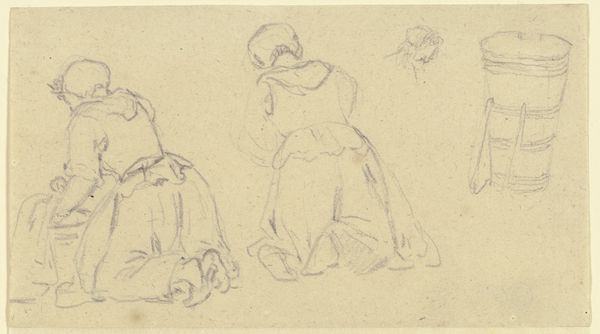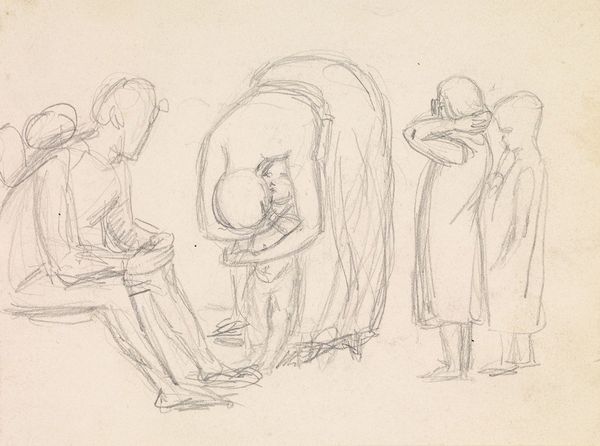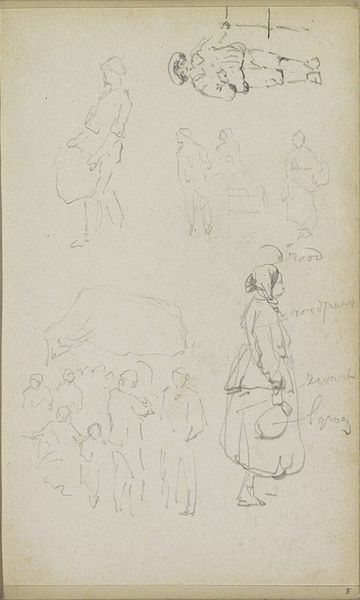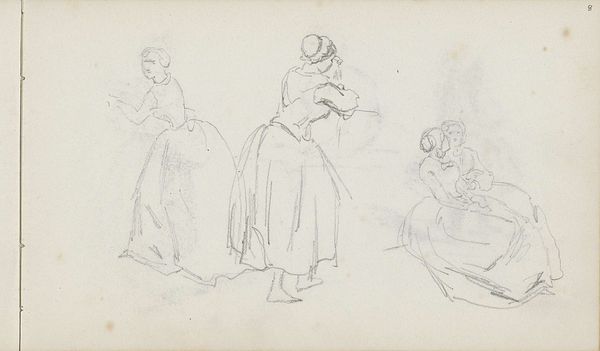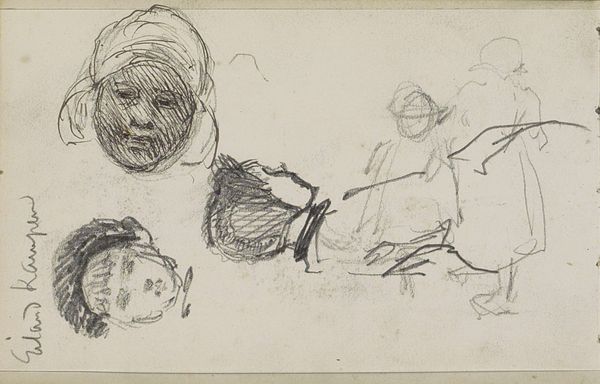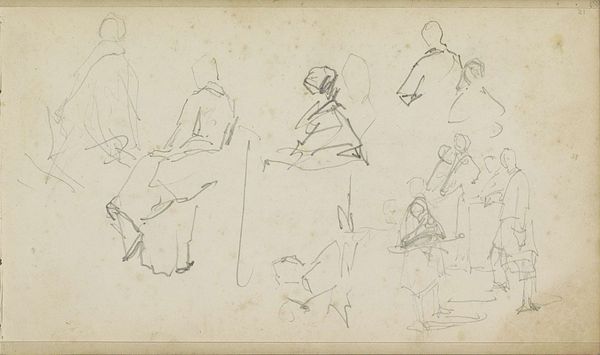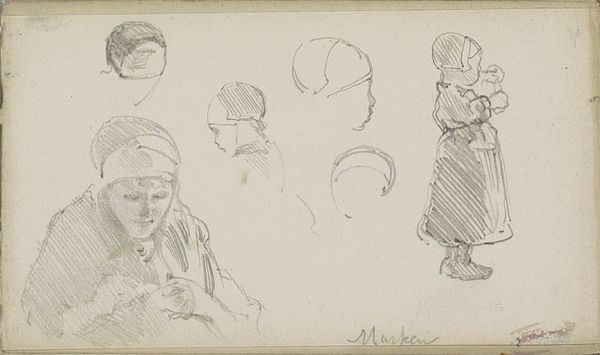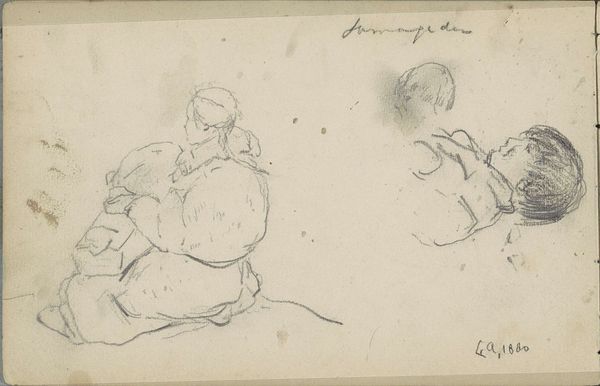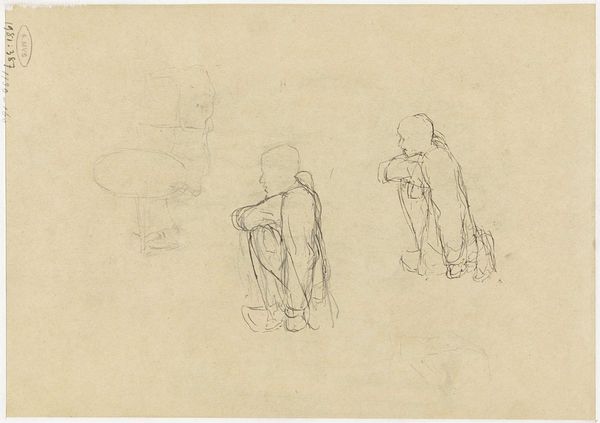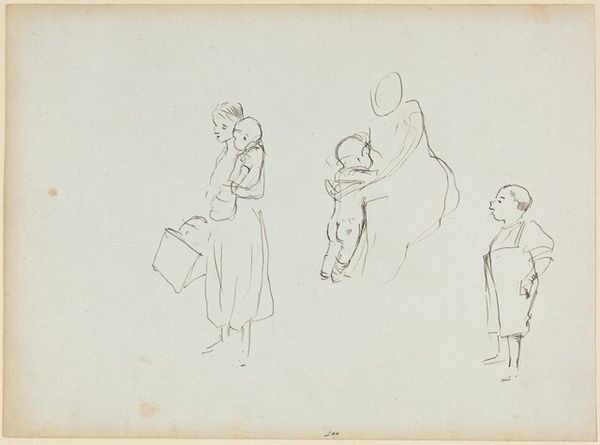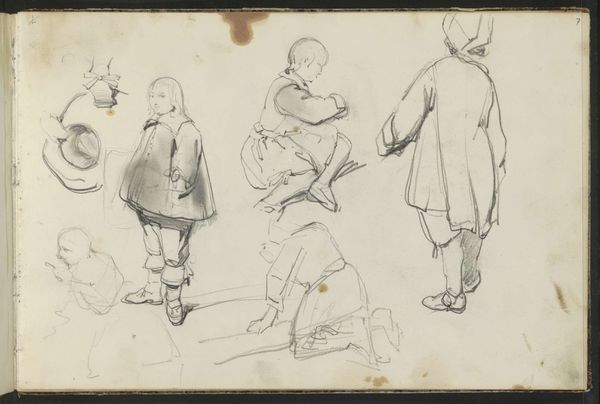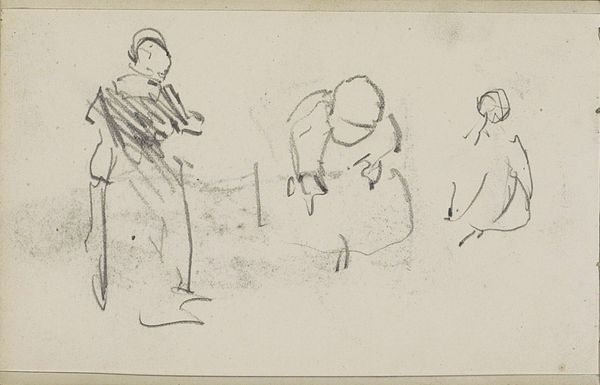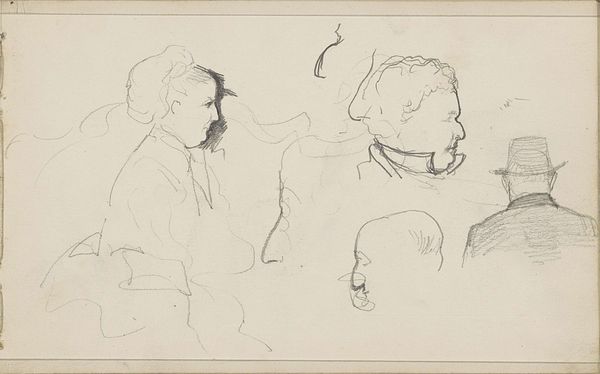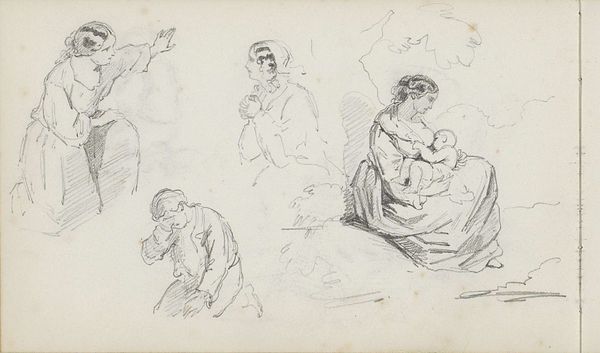
drawing, pencil
#
portrait
#
drawing
#
imaginative character sketch
#
light pencil work
#
quirky sketch
#
figuration
#
personal sketchbook
#
idea generation sketch
#
sketchwork
#
character sketch
#
pencil
#
sketchbook drawing
#
genre-painting
#
fashion sketch
#
initial sketch
Copyright: Rijks Museum: Open Domain
Curator: Here we have "Meisjes in Marker klederdracht," a pencil drawing by George Clausen, dating back to 1875. Editor: It's striking, isn't it? Raw, yet delicate. It captures a sense of fleeting observation. The sketchy lines convey so much with so little. There's almost a ghostliness to it. Curator: Absolutely. This piece offers us a glimpse into the artistic process, revealing Clausen's initial impressions. It provides insight into 19th-century Dutch culture and its regional costumes. Marker klederdracht refers to the traditional clothing worn by women and girls in Marken, a village in the Netherlands. Editor: What do you find particularly intriguing about this focus on regional dress? To me it almost feels like an attempt to categorize or preserve identity in a time of broader national consolidation. Were these costumes already being viewed as something that might vanish? Curator: That’s a keen observation. The late 19th century was a period of increasing national awareness. Artists documented regional customs, reflecting a mix of cultural pride and anxiety about modernization. Clausen, who would become known for his later Impressionist works, seems here interested in capturing an authentic image of Dutch girlhood, situating his work between social documentation and genre scene. Editor: And there is this subtle aspect to the rendering of these young figures; they aren't individualized portraits. They appear more like studies of forms, shapes clad in cultural significance, aren’t they? This invites consideration of childhood as a societal construct. We look to childhood innocence at specific historical moments like this one as well as anxieties tied up in these traditions and folkways. Curator: I agree. They function almost as archetypes. Furthermore, considering Clausen’s artistic evolution, it's compelling to see his early exploration of light and form. Even in this sketch, one can discern his budding interest in capturing fleeting moments and natural light, as indicated in the figure sitting at what might be a window. Editor: It does seem that the image presents a series of perspectives – figures facing every possible way from the picture's point of view. What appears almost effortless speaks volumes about the visual choices an artist makes when considering the role of representation in creating something that speaks about belonging and self-definition. Curator: Indeed. This simple pencil sketch serves as an interesting reflection on cultural identity, artistic development, and the power of seemingly simple representation. Editor: For me, it's a quiet reminder of the beauty found in cultural specificity, but also, importantly, how identity can be studied and commodified through art.
Comments
No comments
Be the first to comment and join the conversation on the ultimate creative platform.
